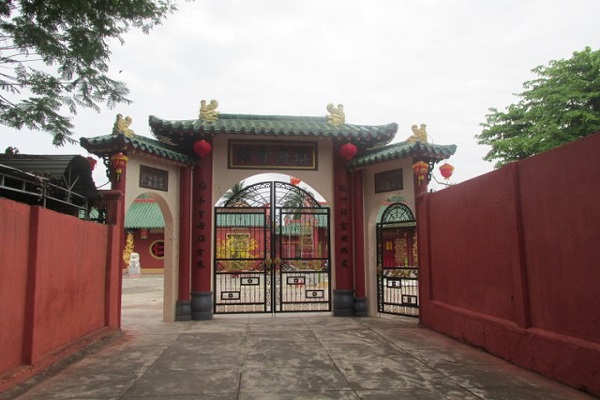Description
Quynh Phu Assembly Hall is located at 170 Tran Quy Cap Street, Ninh Hiep Ward, Ninh Hoa Town, Khanh Hoa Province.
Overseas Chinese of Hainan origin have a long tradition of worshiping Lady Thien Hau, wherever they go, once they have settled down, the first thing to do is to set up a shrine to worship her. According to legend, 300 years ago, the first temple of the Hai Nam people was established in Hoi Thanh village, now in Ninh Giang ward. In 1868, Ba Thien Hau Temple was built by Hainan people in Ninh Hoa, then built the Quan Thanh De Quan Temple next to Ba Temple to worship and Hainan people took this place as a place for guild activities, so called General is Quynh Phu Assembly Hall.
According to the elders of the Hainan people in Ninh Hoa, and based on the stone inscriptions left at Tien Dien: the land to build Quynh Phu Assembly Hall was purchased by the State of Hai Nam in the 50s of the 19th century. (Tu Duc period). In the Year of the Goat (1859), Mr. Phan Huu Han, Phuong Trieu Co, Phu The Quynh, Ham Van Ma, Ham Phuong Chuan ... together mobilized their state to contribute money to accumulate and buy land to build Quynh Phu Assembly Hall and Thien Thien. Hau Cung is the first building built, and is also the Quynh Phu Assembly Hall.
According to the epitaph "Thien Hau Cung Bi Ky" composed by the forefather Phan Huu Luan, which is still kept in the Quynh Phu Hoi Quan Precinct: Thien Hau Cung was built in 1686 to worship Thien Hau Thanh Mau - a sea deity who was recognized as a god of the sea. People in the south coast of China and overseas Chinese are devoted to it. In the early years of the 20th century, the State of Hainan in Ninh Hoa continued to raise money and then built the Quan Thanh Temple next to Thien Hau Palace, and built some more rooms next to the Quan Thanh Mieu to serve as classrooms. for Chinese children in Ninh Hoa. In 1936, Binh Hoa Primary School was officially born, this may be the first Chinese-language primary school in the whole South Central region and Quynh Phu Hoi Quan has become a cultural institution with the most comprehensive nature with Thien Nam. Hau Cung, Quan Thanh Temple and Binh Hoa Primary School. It has become the common home of not only Hainan overseas Chinese but also all overseas Chinese living in Ninh Hoa.
Quynh Phu Hoi Quan (ie Hai Nam Assembly Hall) in Ninh Hoa is located on a two-acre rectangular land on Tran Quy Cap street. This is the Assembly Hall with the largest construction scale and area; At the same time, it is also the most general assembly in the system of Chinese assembly halls and temples in Khanh Hoa.

The overall plan of Quynh Phu Hoi Quan
Quynh Phu Hoi Quan includes the following architectural works: Tam Quan, courtyard, Thien Hau Cung, Nghia Tu, Quan Thanh Mieu.
Over the past hundred years, although it has undergone many restorations and embellishments, Quynh Phu Hoi Quan still retains its original form as it was during its creation. In 2005, the relic was completely restored and embellished.
Every year, on the day of worshiping Saint Hau Thien Mau, Quan Thanh De Quan, overseas Chinese from Hainan hold a very solemn sacrifice ceremony.
Recognizing the typical historical - cultural values of Quynh Phu Hoi Quan, in 2009 Khanh Hoa Provincial People's Committee ranked it as a provincial relic.